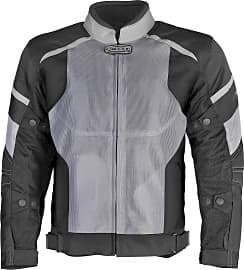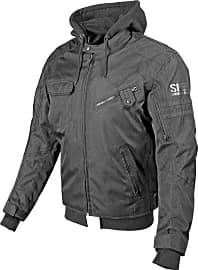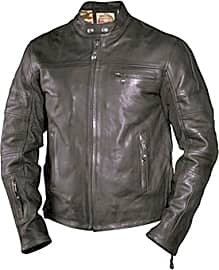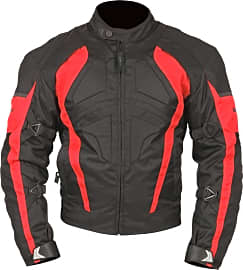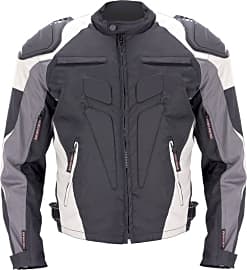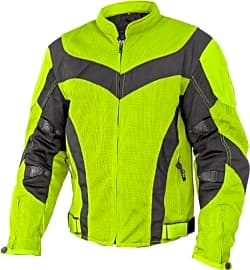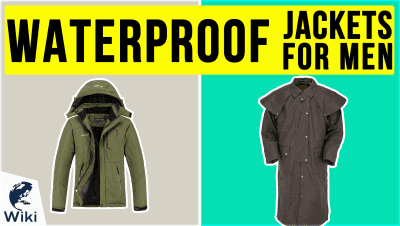The 10 Best Motorcycle Jackets

This wiki has been updated 47 times since it was first published in March of 2015. Let's face it: half the reason men ride motorcycles is because of how cool they look in biker jackets. The selections on this list will ensure that everyone turns to look when you walk in the room— and that you'll keep your skin if some jerk doesn't check before changing lanes. We've ranked the best the market has to offer by their protectiveness, comfort, visibility, and, yes, their style. When users buy our independently chosen editorial recommendations, we may earn commissions to help fund the Wiki.
Editor's Notes
May 21, 2019:
The Joe Rocket Classic '92 went ahead and rocketed its way to the top of the list thanks to a combination of its protective features and its price, unseating the Roland Sands model previously at number one. That jacket now resides at number four, as its price pushes it away from practicality and more towards luxury, especially when you consider that it ships with its armor pockets empty, and that you'd have to buy plating for it to truly be street safe. The Speed and Strength Off The Chain 2.0 is a newcomer to the ranking that enters at number three thanks to a high degree of abrasion-resistance and a smartly designed removable hooded liner. It also boasts reflective trim that's visible on the road, but doesn't detract from the jacket's appearance when it's not in the vicinity of any headlights.
Funny Bones Aren't So Funny When You Break Them
Yet, day after day, I see riders out on the highways and sideways of southern California with nothing but a T-shirt on as protection.
It's a strange and terrible feeling to bang your funny bone off a desk, or a wall, or any surface for which you simply weren't accounting. That tingling feeling isn't quite pain, though it certainly qualifies as discomfort. The reality is that there's a nerve running along that area of your elbow, and when you hit the bone just right the nerve gets compressed, resulting in that miserable combination of feelings.
Now, I'd like you to imagine hitting that bone against a run of pavement, your body traveling along at 65 mph without a shred of protection between the asphalt and your skin. Sounds pretty terrible, right?
Yet, day after day, I see riders out on the highways and sideways of southern California with nothing but a T-shirt on as protection. Maybe they're convinced that they're invincible, and maybe they are. Even if they are invincible, though, I can tell you this: they aren't doing their tan lines any favors. T-shirt + Motorcycle = Farmer's Tan. That's basic, third grade math right there.
If you've tried on a few motorcycle jackets, you might have noticed that their arms tend to run a little long. That's so the skin on your wrists will be protected from the sun in your riding position. Along those arms you'll also find strong elbow pads designed to keep that area of bone protected in a sidelong fall, and to protect that nerve from the kind of damage than can result in a potential amputation.
Shoulder pads exists for a similar reason, as there are a lot of fragile bones and joints in the rather complex shoulder assembly.
Not all motorcycle jackets have back pads, and some come with a much softer padding that you'd find in the elbows or shoulders, but you ought to be able to upgrade this or any other pad in a good jacket.
Never Say Never To Leather
You're going to encounter two pretty staunch camps in the motorcycling community when it comes to jacket material. The one camp prefers leather, the other textile. Both jacket types have their pros and cons, and part of the final decision for you is going to come down to style.
Leather motorcycle jackets come with a much heftier serving of built-in cool. I mean this metaphorically, of course, since leather is probably the worst material to don along a sun-bleached freeway on a hot summer's day. In any other weather, though, leather can't be beat.
It's not going to keep you quite as cool as riding around in a T-shirt, but it's a lot cooler than leather and it's not going to expose your skin to harmful UV rays.
It isn't just a matter of leather having superior abrasion resistance to textiles, either. Over time, a leather jacket will mold to your body in its riding position better than any other material, which will ensure that your padding is firmly set in all the right places should you take a spill.
Textiles, on the other hand, come in a much wider variety of climate options, with layered, weather-proof models that can withstand even the harshest of winter storms. Why you would be out riding in the middle of a blizzard is beyond me, but, hey, to each his or her own.
You can also get amazing hot weather gear in textile jackets, the mesh construction of which makes it feel like you've got a weak air conditioner blowing on you as soon as you get above 35 mph. It's not going to keep you quite as cool as riding around in a T-shirt, but it's a lot cooler than leather and it's not going to expose your skin to harmful UV rays.
In short, you probably need two jackets. My first jacket was a killer leather number with a removable cotton quilt lining. That's because I bought my first bike in December. Come May, I went out and got a mesh textile jacket for the summer. I suggest you do the same.
A Zipper To Seal The Fates
Before the 1920s, leather jackets worn by motorcyclists were of the fashion used by aviators and other military members. One notable thing about them was that they were made as button-ups. It wasn't until Irving Schott of Schott Bros. added an asymmetrically offset zipper to his leather jacket design in 1928 that the leather jacket as we know it today found its iconic form.
Before the 1920s, leather jackets worn by motorcyclists were of the fashion used by aviators and other military members.
Still, despite its popularity and its practicality for and among motorcyclists, the Schott and its imitators by Sears and Harley Davidson didn't find a point of resonance in popular culture until a little movie came along in 1953 inspired by the Hollister riot of 1947.
That movie was called The Wild One, and it featured a young actor named Marlon Brando whose sleek, rebellious appearance in a classic Schott jacket seared a specific image of cool into the zeitgeist.
From that moment on up through the punk movement of the late 1970s and into today, the motorcycle jacket has endured as a symbol of freedom and a means of personal expression in a world increasingly weary of individuality. It's an important starting point, but as Dennis Hopper says, "It takes more than going down to the video store and renting Easy Rider to be a rebel."


